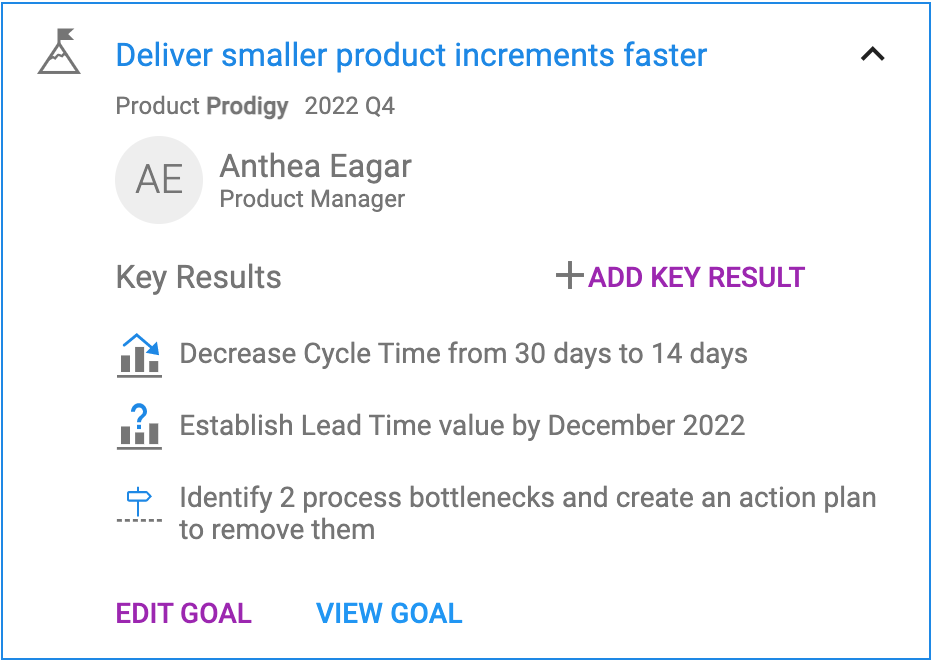Companies starting with OKRs tend to create a list of tasks or initiatives. That is much easier but does not fulfill the Key Result premise - answering the "Why", not "What".
The image below is displaying an OKR. Three Key Results, two with included metrics (Cycle Time and Lead Time), and the third one, which has a nature of a task.

The icons in front of the Key Results represent the Key Result type. There are six types available in Agile Tools: Baseline, Increase, Decrease, Maintain, Milestone and Percentage.

We encourage you to mainly use Increase and Decrease types and only supplement them with others. See the explanation of the "drivers".
Baseline Key Result type
When you want to improve whatever you want to measure - remember "Measure What Matters"; you need to know the value you are at now. Sometimes it is not so trivial to get to those values; you need some time, process improvements, technology enablement, and even company diplomacy enactment.
With Baseline, you need to provide the value of the metric you will then improve on in the next chosen period (quarter).
Decrease Key Result type
There are metrics that we want their values to be low - to make them lower than they are today. When creating a Key Result of this type, you will have to provide the initial value (From, X) and the target value (To, Y).
Increase Key Result type
The most commonly used type. If it is in the "nature" of the metric (preferably part of the Key Result) to be better if the value is higher, then you select this type when creating a Key Result.
Maintain Key Result type
There are times when just preventing values from dropping (or rising) outside some defined thresholds is good. So, the concept of keeping the thing you measure is a success in itself.
Milestone Key Result type
Most popular with early OKR practitioners. Often, this is a (longer-running) task that does not include a metric. There is hardly anything to measure in this type, but instead, count the steps needed to achieve the milestone. You can enumerate the steps and assign a percentage (a weight) to each one.
Percentage Key Result type
This one is probably the most recognizable, as all the OKR tools use it. It is the most generic type, as anything can be measured from 0 to 100 percent. In most cases, such a type of monitoring progress is not only tedious but unnatural. For your convenience, we added the option to track by the number of "items", so you do not have to calculate "by hand".